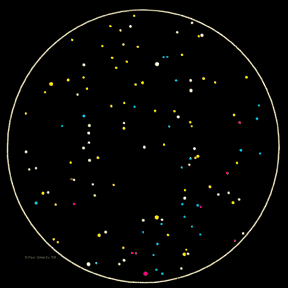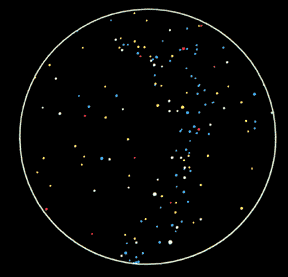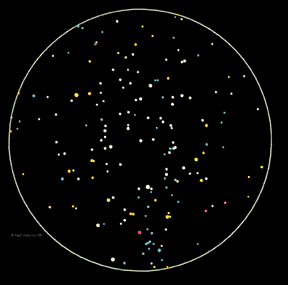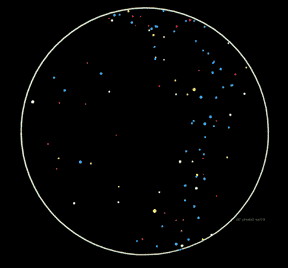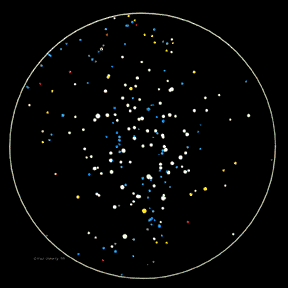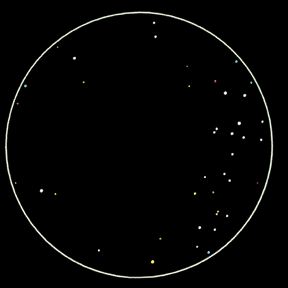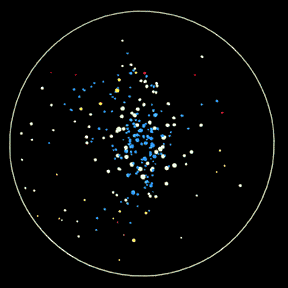v = 0 toward Polaris
v=0 rear view
Left: Forward view at rest, v = 0
Polaris at the center of the screen.
The Big Dipper at the left, notice it's stars are white,yellow and blue.
Cassiopeia to the right,
Leo below center on the left edge. Regulus is the blue star at 8 O'clock.
Betegeuse is the red star at the bottom, 6 O'clock, Orion is bisected by the edge of the view screen.
Right: Rear View
The Milky Way crosses the screen.
The three stars of Orion's belt are at the bottom.
v = 0.4c Forward
v = 0.4c Rear
v = 0.4 c
Forward view
The stars are begining to move toward Polaris.
Orion is entirely visible at the bottom.
The stars near the center are becoming brighter.
The rear View is beginning to thin out.
v=0.7c Forward
v=0.7c Rear
v = 0.7 c
Forward view.
Six stars in the Big Dipper are blue.
Betegeuse is yellow.
Rear View
Is getting empty.
v = 0.92c Forward
(Only 3 dim stars remain in the rear view. Not shown.)
v = 0.92 c Forward
All the stars of the Big Dipper are Blue.
Orion is white.
Stars toward the center are becoming blue and bright.
(Only 3 dim stars remain in the rear view. Which is not shown.)
